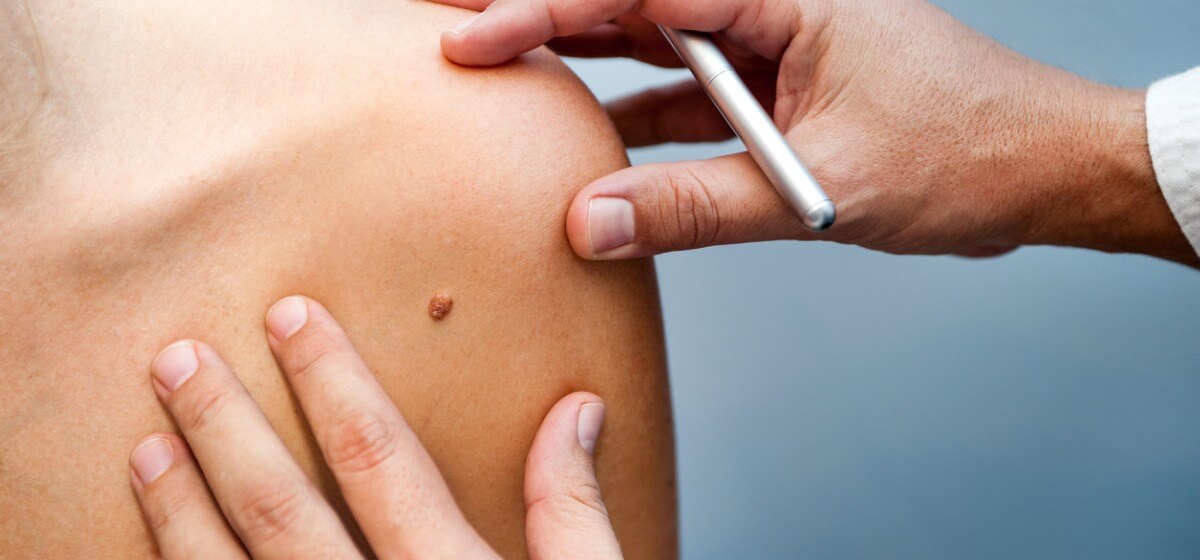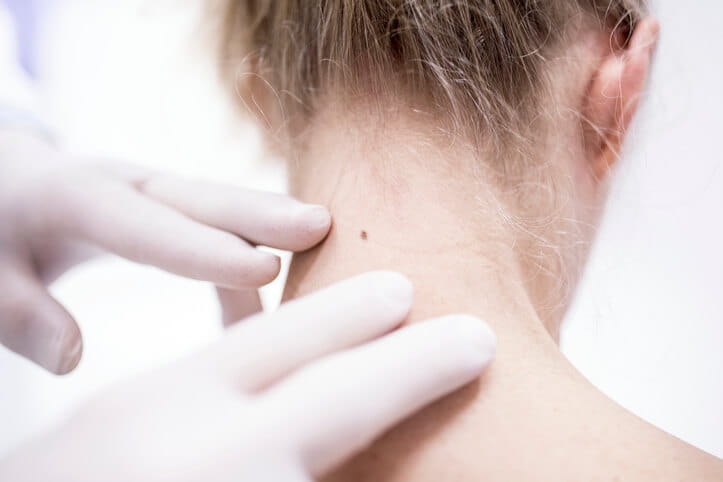How Does Skin Cancer Look in Its Early Stages?

The most common form of cancer, skin cancer, is the uncontrolled growth of skin cells. Skin cancer is the most common cancer in the United States and worldwide and in fact, 1 in 5 Americans will develop skin cancer by the age of 70. This is alarming because it’s rising. Knowing what skin cancer characteristics looks like can help you spot the signs sooner rather than later.
What Can Cause Skin Cancer?
Skin cancer occurs when the DNA of skin cells is damaged, often as the result of too much exposure to the sun’s ultraviolet radiation. This damage leads to mutations that cause skin cells to multiply more rapidly than normal and form tumors.
Types of Skin Cancer
Your skin has multiple layers. Skin cancer typically develops in the outer layer, called the epidermis. The epidermis is made up of three kinds of cells: basal cells, squamous cells and melanocytes.
The three types of skin cancer include:
What Do the First Signs of Each Skin Cancer Type Look Like?
Skin cancers — including basal cell carcinoma, squamous cell carcinoma, and melanoma often start as changes to your skin. Let’s take a closer look to understand the appearance and characteristics of each type of skin cancer.
Basal cell carcinoma characteristics
Basal cell carcinomas can be treated effectively, especially if found early. They do not commonly spread, although they can cause significant damage to surrounding tissue and bone if not addressed. Basal cell carcinomas may have characteristics that include:
- Flat, firm growths that may be pale, pink or red, or in some cases translucent and shiny
- Black, blue or brown patches on the skin
- Unusual patches that bleed easily or ooze and crust
- A raised area with a depression in the center
Squamous cell carcinoma characteristics
The earlier a squamous cell carcinoma is discovered and treated, the better the prognosis. This form of cancer can have:
- A lump with a scaly, rough or crusty surface
- A slow-growing flat patch that is reddish in color
- A flat patch that is different than surrounding skin, but only slightly
Melanoma characteristics
Melanoma is the most serious form of skin cancer, as it can spread to other parts of the body. According the American Cancer Society, while melanoma accounts for only 1 percent of skin cancers, it causes a large majority of skin cancer deaths. Prompt identification and treatment is crucial with this form of cancer.
Melanoma characteristics include:
- Irregular or asymmetrical moles or other growths
- A mole larger than a pencil eraser
- Growths both in sun-exposed areas and other areas such as the bottoms of the feet and armpits.
When evaluating a mole, it is helpful to remember the “ABCDEs.” They are:
Asymmetrical shape
Border irregularities
Color that isn’t consistent
Diameter larger than 6 millimeters
Evolving size or shape
If a mole demonstrates any of these characteristics, contact your healthcare provider. It is also recommended that you take photos of the mole periodically and note the date so that its changes, if any, can be tracked.
Learn more about the common spots for skin cancer.
Skin Cancer Prevention
Your skin cancer risk can be minimized by following these prevention tips:
- Wearing sunscreen regularly
- Wearing clothing that protects you from the sun
- Performing monthly (or more frequently, if needed) self exams
- Consulting with a doctor as needed
Find A Doctor
The good news is that 99 percent of all cases are curable if they are diagnosed and treated early enough. So it’s especially important to detect this type of skin cancer early when treatment is most likely to be successful. If you are interested in getting evaluated for skin cancer, find a Baptist cancer care provider near you.



